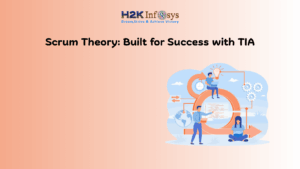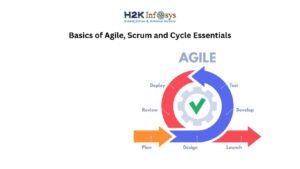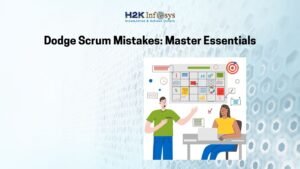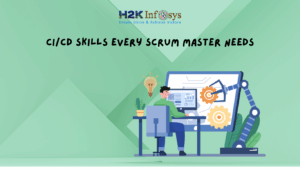Negative economic pressures and growth chances arrived in 2020, a year marked by turbulent transformation. COVID-19 accelerated Agile technological advancement, heightened rivalry, and raised consumer expectations.
Businesses have accelerated their digital transformation in response to consumer demands for quicker, tailored online experiences and the necessity for remote work. According to McKinsey Research, firms will become “virtual, digital-centric, and agile” as a result of the COVID-19 pandemic.
We are about to embark on a year of rapid innovation and transformation in 2024. For businesses to create digital products at a rate that fulfils the expectations of today’s consumers, their software development processes must be clear, quick, and flexible to customer needs. Agile software development is now again a top option for addressing the needs of 2024 and beyond. Check out the Agile certification online course to learn more. Here are some reasons why your company should leverage Agile software development in 2024:
1.Empirical Process Control
Agile software development is based on the idea and principles of empirical process control. It is predicated on the notion that concentrating on the regular delivery of functional software, team member collaboration, and adaptability are the best ways to manage a software development project. Empirical process control highlights the value of stakeholder and team participation in addition to gradual and iterative development. Everything must be defined upfront when using waterfall software development. We are able to plan ahead and establish basic procedures. The agile development technique, on the other hand, is based on more flexible empirical process control.
The goal of empirical process control is to adjust for unforeseen events. The empirical process control’s three pillars are
- Transparency: Being aware of and disclosing all relevant information at all times.
- Inspection: Keeping an open mind on how the team, the product, and the software development process may all be improved continuously.
- Adaptation: Making changes in response to the comments received during the inspection.
Despite their stark differences, the waterfall technique and empirical process control have their uses. For instance, some teams might employ a hybrid strategy to use the waterfall technique to plan and predict specific project characteristics, and then apply empirical process control to deliver and improve the product repeatedly. Teams will typically select one strategy over another, though, based on the particular requirements and objectives of the project. Agile aims to find and create the best solution through iterative development. Agile offers a flexible framework that leads to quantifiable data points and a quicker time to market. Scrum, Kanban, Crystal, and Lean Software Development are examples of agile approaches.
2.Flexible and Precise
The term “agile” refers to a method of software development that allows for incremental and iterative work that incorporates feedback from stakeholders and internal teams to produce products that finally satisfy customers.
Businesses that employ Agile methodology approach this planning stage using precise procedures and numerical algorithms to identify and rank user stories, which help them build their product backlog (a collection of user stories representing the requirements for the product).
Agile enables teams to break the project up into manageable modules that, when completed in Scrum sprints, each add a full feature to the previous release. These Sprints are well-defined objectives that are disclosed every day and at the conclusion of every release.
Even though we immediately incorporate feedback into each Sprint goal during daily scrum sessions, at the conclusion of the Sprint we have the opportunity to further redefine the backlog to make sure our overall goals are reached.
3.Adaptability through Creative Destruction Agile
The process by which the new destroys the old is known as creative destruction. Though creative destruction also occurs at the corporate level, we may examine this from the perspective of product development, where feedback reimagines the backlog of products. The goal of digital transformation is to increase a company’s operational agility and customer value.
Furthermore, it involves more than just launching an app or utilising the Cloud; it also entails accepting creative destruction, reconsidering outdated company strategies, and trying new things to adapt to the demands of the modern market.
Agile software development encourages creativity, quickness, and flexibility, enabling companies to react more quickly to shifting circumstances. Creative destruction acknowledges that all aspects of the company, including the goods, are in a state of perpetual change.
The goal of the product development process should be to continuously improve while discovering, defining, designing, and building the desired outcome. This requires alignment of all process elements.
4.Built for Success
Scrum and agile software development contribute to the regular testing and review of product increments, which modifies the final product and team dynamics. Agile has made it possible for many businesses to adapt to change more quickly, which has led to the delivery of more pertinent products in shorter production cycles.
Projects using the Agile methodology for software development have twice the success rate of projects using the Waterfall methodology, and they also achieve an 18–20% improvement in time-to-market.
Agile development services are not limited to software development; the same philosophy can be used for enterprises’ digital transformations by incorporating engagement, cross-functional cooperation, and lean procedures.
5.Less Risky
Agile software development ensures you are producing the correct product in the most efficient way possible by having extensive checks and balances on the team, procedures, and product backlog.
Agile software development is a mindset that encourages cross-functional team collaboration, clear communication, and transparency. It is not simply about sprints.
6.Shorter Cycles Avoid the 90% Problem
Agile teams find it easier to learn the smaller tasks and iterations when a larger task is broken up into smaller ones. Completing the work is one of Scrum‘s main principles. Scrum places more emphasis on teams completing their backlog items during the Sprint than it does on fostering an atmosphere where teams are 90% done with multiple tasks.
By taking this strategy, the team is able to concentrate on perfecting the little jobs instead of obsessing about the final product. Teams can shorten time-to-market by focusing at this stage. Even with more preparation and communication, ongoing input also helps prevent expensive rework or product misalignment. Because each Sprint is precisely defined in relation to the final product release, Agile products offer transparency on the project’s progress.
Conclusion To learn more about Agile, check out the Agile project management certification course online.





























